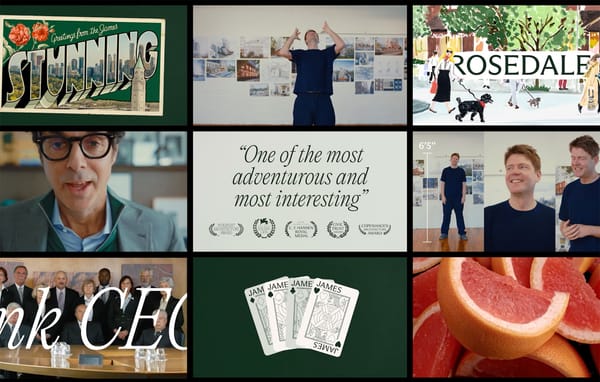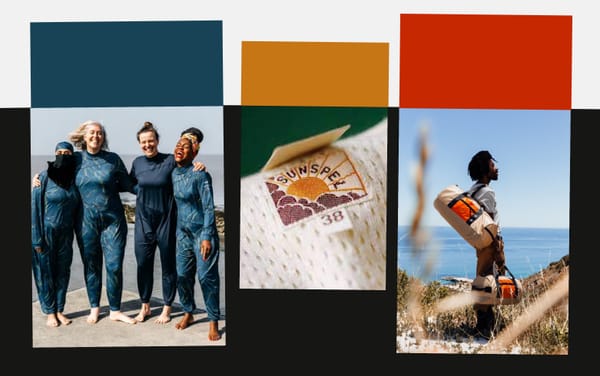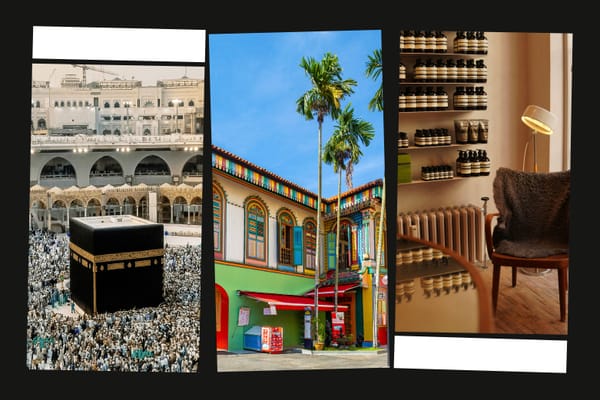Matthew Hickey
The architect on universal inclusivity, Indigenous ways of knowing and being, and moving beyond star worship in architecture
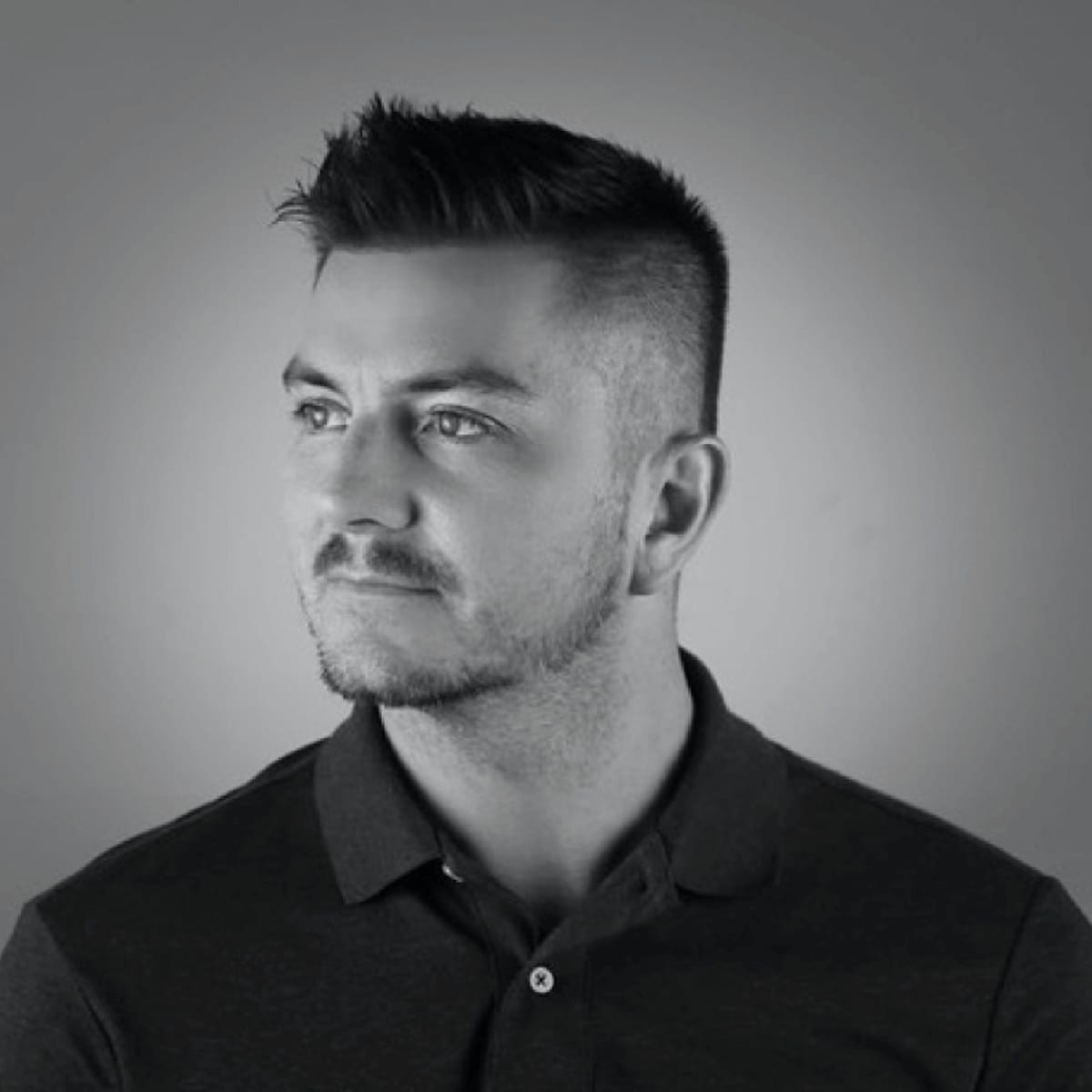
Introduction
Matthew Hickey is a young architect and a partner at the Indigenous architecture firm Two Row, which is located in the Six Nations of the Grand River. Two Row specializes in projects for community organizations and for clients in education and government. In recent years, the company has partnered with national and international firms on projects of increasing scale and civic, cultural, and social importance.
In this conversation, Hickey discusses his idea of universal inclusivity, the embrace by settler cultures of Indigenous ways of knowing and being, favorite Two Row projects, and moving beyond star worship in architecture.
Transcript
Matthew Hickey: In this area, in Southern Ontario, it’s really about the retreat of the glaciers, right? So we’re going back fourteen thousand years here. There’s been evidence of Indigenous people being here about ten thousand years ago. But there’s also four thousand years of other things going on, whether it’s rivers eroding, whether it’s lakes moving, whether it’s shorelines changing—all these things are important to understanding where you’re building, why you’re building there, what impact you’re having on this right now, you know? If you go back fourteen thousand years, it does tend to make you think fourteen thousand years ahead as well.
[intro music]
Paddy Harrington: Matthew Hickey is an architect and a partner at the Indigenous architecture firm Two Row. The firm has worked for decades on reservations and in settler communities in both Canada and the United States, giving built expression to Indigenous ways of knowing and being. In recent years, Two Row has partnered with an increasing number of national and international architecture firms on projects of civic, cultural, and social importance. I’ll let him introduce himself:
MH: I’ll introduce myself in my language. [Speaks in Mohawk.] My name is Matthew Hickey, I’m Kanienʼkehá꞉ka, which is Mohawk, from Six Nations of the Grand River. I didn’t grow up on the Grand River because I’m a product of the Indian Act. My mother is Indigenous; my father is white. So she lost her status when she married him. And she didn’t get back until 1985, under Bill C-31. So I’m a Bill C-31 B, which means that I got my status when I was about seven years old.
I grew up in Hamilton, Ontario. I’ve got an undergrad [degree] from OCAD, Ontario College of Art and Design, where I currently teach as an assistant professor. I’ve taught there for the past five years or so. And then, my master’s is from the University of Calgary, which was very much my focus on Indigenous design there. And now I work for an Indigenous architecture firm called Two Row Architect, where I’m one of two Indigenous architects that lead that firm.
PH: I’d love to hear you talk a little bit more about things like the Indian Act.
MH: Sure—
PH: Just for context for people.
MH: First of all, we’re still governed under the Indian Act, which is amazing to me. And it’s still called the Indian Act, you know? It’s been quite impactful and has done a lot of damage to Indigenous people across Canada over the past one hundred and fifty–plus years. The roots of residential schools are embedded in the Indian Act. The patriarchal way of thinking about the way we should be living is embedded in the Indian Act, when a lot of Indigenous groups, including my people, the Haudenosaunee, the people of the longhouse, are matriarchal. We follow our mothers’ clans. I always say that I think the world would be better off if women were in control [laughs], but … we’re slowly getting there. It’s a different mindset.
They systematically tried to change Indigenous people. It’s a testament to the fact that we’re still here and we still have our values and we still have our knowledge of how strong we are.
PH: Even the name of your firm, Two Row, is drawn from an agreement between Dutch settlers and Seneca peoples. Could you talk a little about that?
MH:The firm was started in 1992 by my business partner Brian Porter. He was a sole proprietor—still is sole proprietor of the firm—and has been working in architecture for thirty … It was our thirtieth anniversary last year. So when he first started, this was around the time when the Ontario Association of Architects deregulated. You used to have your name in the name of the firm. You know, Montgomery Sisam, Diamond Schmitt, Gow Hastings, whatever it is. We’ve moved to a point where you could call it whatever you want. That’s where you get Superkül, it was at this time as well.
So Two Row came from the Two Row Gaswéñdah, which, as you said, was between the Dutch and the Seneca people. It’s meant to symbolize two parallel paths, two ships. One ship and one canoe traveling down the Saint Lawrence River on parallel paths with each other. Really indicating a way of thinking of how these two groups would live together. We see this as kind of a reflection of how we approach our work, as well. We do a lot of collaborations with what we would call mainstream firms. For us, it’s really about that mutual respect. It’s about bringing forward the best of both worlds, which we have to do in 2023. We should be looking to Indigenous values, but we should also be using contemporary methods and technologies that we’ve established and grown with from a Western point of view. So, that name really is a product of our history, of our culture, but also a reality of the way that we work and our processes. I will also add that the name was asked for. [Brian] didn’t just name it. He went to an elder chief and asked if we could have permission to use that name as well.
PH: A bit of a jump here from something very specific to something quite broad, but there is this conversation around inclusive design these days, and thinking about accommodating disability specifically. But, there’s another way of talking about it, which is universal inclusivity. Can you talk a little bit about what that idea means for you?
MH: One of the things we talk about in our office a lot is how we approach our relationship to the world around us. We were thinking about inclusivity, we were thinking about safety, and how we do that in a manner that really becomes universal. You know, it’s not just about disabilities, it’s not just about people with challenges. It’s about all the challenges that all of our relations face on this earth. Our relations being the wind, the rain, the sun, birds, bees, insects—whatever it is that has life on this planet that we don’t see as equal.
This term universal inclusivity came in response to accessibility inclusivity and thinking beyond that. How do we make it universal, so that it applies to everything? In the nature of architecture, landscape design, urban planning, transportation planning, whatever it is, there’s always displacement. And oftentimes we’re displacing all these other things that we rely on. So, thinking about the importance of these pieces—as important or more important than humans—is a way that we like to frame that idea about universal inclusivity. How do we include beyond just humans?
PH: Could you speak a little bit to why that’s so important, that we’re not displacing other forms of life?
MH: Yeah, the be all and end all is that we rely on these other pieces for our survival. If you take a look at the timeline of how long we’ve been on the earth compared to water, for example [laughs], we’re a blip in time. We’re a blip in time. If you look at trees, if you look at bees, we’re still a blip in time. And we think we’re so smart and so important, [but] in reality we could be gone in a second. And all these other things, we rely on them. So the moment we start treating these other pieces as important, it’s mutually beneficial—[it’s] for us as well.
So, we’re not saving something else. I always say we can’t save the earth, we need to save the human species. The earth will be fine! Mother Earth will take care of herself. It’s us we need to worry about. So … you know, thinking that way, for us, is really about how you can start to approach work, whatever it may be from a design point of view, a world point of view, in a way that allows or promotes spaces for those other things that we need to survive.
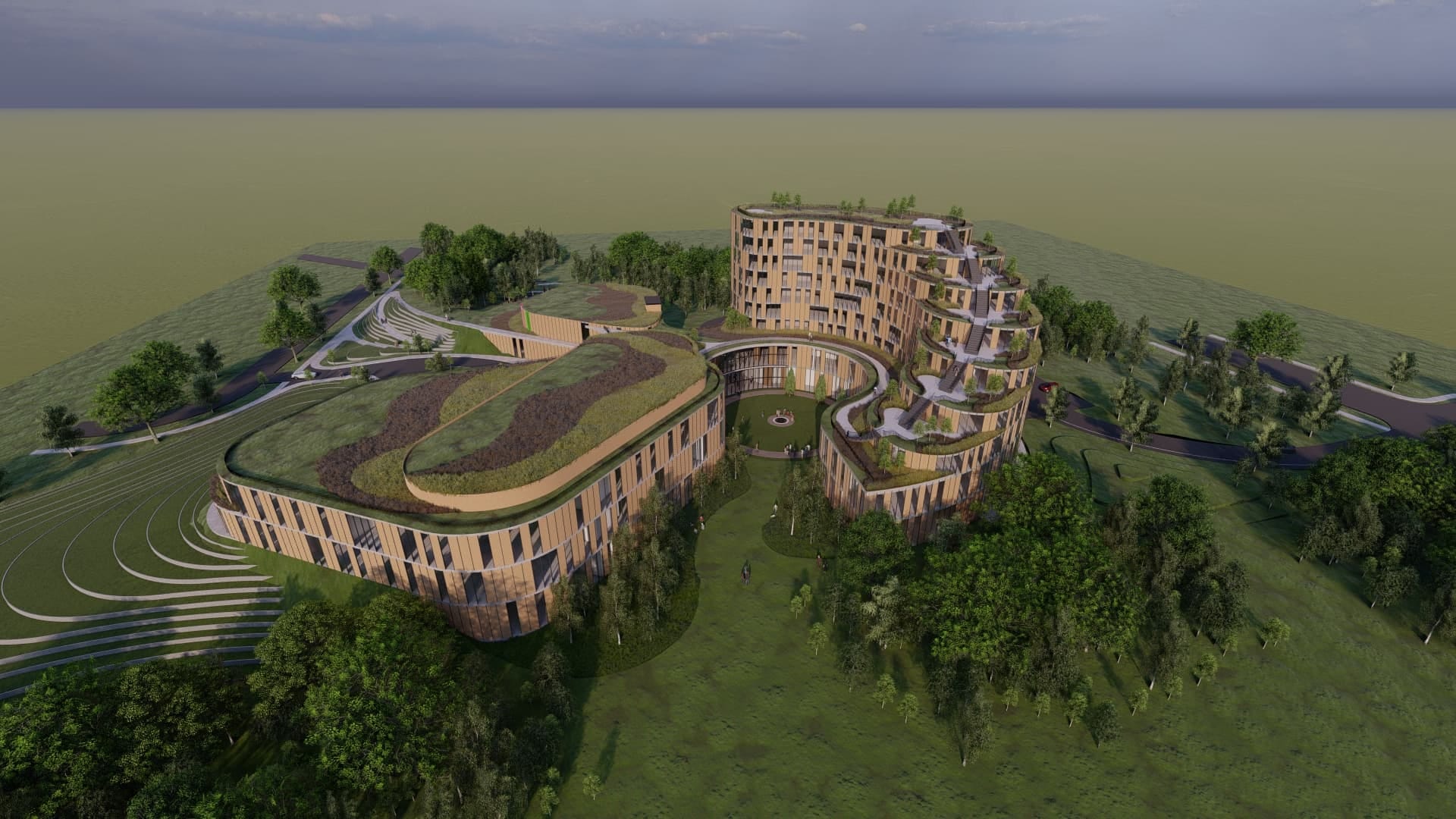
PH:Could you speak about some instances where that way of thinking takes shape in a building?
MH: Another way of thinking about it is non-siloing. Is it just a building? What are we doing when we’re building a building? We’re also dealing with landscape, we’re also dealing with infrastructure, we’re dealing with … diverting water, to some degree. How do we think about all these things in connection? What are the simplest ways we have … I came to this idea of water, but rain: we constantly call it stormwater in this city. But we need rain. Is it stormwater? Is it something to be captured and put into a tube, into a pipe, and then shipped out to the ocean or the lake? I would say it’s not. It’s something we need. It’s a gift to us. So if we could start to think about how we capture that, how do we use that, how do we celebrate water in a way that we can harvest it and use it on our site? Whether it’s for a landscape form, whether it’s for heating and cooling, whatever it is, and not think about it as a system we need to “deal with.”
The other piece is thinking about building as not just building, but building as landscape, building as an integrated part of the world around it. It doesn’t just stop at your property line. I mean, we’re trained to think this way from a colonial point of view. Even the idea of property is a colonial point of view, you know? These things are perpetual in drawings, in site plans. But the moment we start thinking about this as a larger system—which a lot of people do, especially in landscape design, landscape architecture, where you’re treating a whole system as opposed to one piece of it. If we do that in architecture and urban planning, we’re starting to see a connection just beyond our building and into the world around us.
PH: Is there a favorite project you have that starts to point toward this different way of thinking, in terms of the application of these principles into the building itself, into the project itself?
MH: This is a funny question, your favorite project, because oftentimes it’s the last project that you did. [Laughs] Hopefully it’s the one that’s the most successful, or most up-to-date. For us, we have a project that’s just at the beginning right now in the city of Hamilton. It’s called Biindigen, which means “welcome” in Anishinaabe.
It’s a collection of different service providers coming together. So you have Niwasa [Kendaaswin Teg], which is a child-care service provider, child and family care. You have De dwa da dehs nye>s, which is an Indigenous health organization in partnership with McMaster University, McMaster Health. And you have Ontario Aboriginal Housing Services, which provides housing for Indigenous people off-reserve all over Ontario. So, it’s a unique project in the sense that these are service providers coming together to create a hub, create a space for Indigenous people, for their health, for their well-being, thinking about multi-generational, thinking about community, thinking about all these things that are often kind of siloed in the real world. This building is really meant to be in and of the landscape as well. The current site has an urban farm on it. We’ve built way more building on the site, or are about to build way more building on the site, but we’ve doubled the size of the urban farm as well. So, thinking about access to nature, access to food, all these things that we’ve lost over the past hundred or hundred and fifty years, in a real way. Some would even say post … after the Industrial Revolution, we’re very disconnected from these things. And, for me, that’s a part of health, that’s a part of wellness as well. It’s something we can help to heal not only Indigenous people, but anybody, you know? These things, I think they’re really important.
PH: I often ask our podcast guests about how design can help accelerate positive change. We often hear scary stories: about climate change, food scarcity and forced migration, and the like. It can feel difficult to maintain optimism. And yet I think of design as a fundamentally positive act. If you’re creating something new, you’re not doing so to make a situation worse; you want to make it better. These large and pressing issues need not only be environmental, as the recent efforts in Canada toward reconciliation attest. From an Indigenous design perspective, what do you think design does to help move us toward a better future?
PH: We talk about a kind of a realignment of Western ways of thinking into Indigenous ways of knowing and being. And we see that in architecture. We’re starting to see us cut our strings from European models or typologies of buildings. I mean, take a look at all the bank buildings here. They look like the Pantheon, right? What happened? How are we importing this type of culture? And that’s just a visual thing. I think we’re getting, with LEED [certification], with WELL [certification], with the Living Building Challenge, with all these things, we’re starting to move closer and closer to a holistic way of thinking about doing or approaching our buildings.
We’re pushing that beyond, just even the design of the building and more into the process. How do you work with people? How do we work with contractors? How do we bring everyone to the table, kind of in an equal way to … kind of make these processes, the construction-design process, a little bit more enjoyable? Cause, you know, sometimes it can be quite combative—especially when there’s money and time involved. So, all these Indigenous values, for us, are wrapped up in a holistic approach to the whole building process itself, and not just the outcome.
The values that are based in Indigenous ways of knowing and being, to some degree, are very much common sense. You know, we need to treat things in a proper way, we need to be thoughtful about our resources, we need to be respectful of the things that give us life, and support the lives around us. We need to be educated about these pieces. And then we can start talking about design.
And with design, you’re right, you have to be optimistic. Sometimes it takes … It takes a lot of slowing down. It takes thinking, it takes communication with the people you’re working with. What are we actually producing? So, there’s a lot of things that go on from an Indigenous point of view, and a lot of it has to do with how you’re working with people.
PH: What does the city look like if it’s really realizing these principles and these ideas?
MH: I mean, I have my own vision of the city [laughs]. So, I live on Richmond. Richmond, as you know, is like a five-lane highway that comes into the core of the city from the Don Valley. It’s where all the people that have cars, BMWs and whatnot, drive into the city and work in the financial district for the day and then they take Adelaide out. One way in, one way out, basically. This road, over the pandemic, was basically empty. It was amazing! Absolutely amazing. You could hear the birds for once downtown! I was like, This is what we should be hearing! Right?
Why are we not hearing birds … and I stopped and looked and Richmond has no trees on it. Not one single tree for about two kilometers of this major road that comes into our city. There’s a bike lane. Is it a good bike lane? Not really, it’s a kind of temporary bike lane. They took one lane out and put a concrete barrier up, removed the parking from that side of the road and that’s what we’ve got. We’ve got this four-lane roadway with a bike lane on it. No trees. I mean, how do we start thinking about that intersection of what’s important? How do we create a place for the birds that we’re all of a sudden hearing when there’s no cars around any more? Or they’re there—and maybe they’re there because they didn’t want to be around with the noise. So thinking about, how do you want to treat that streetscape? Do we do a combined bike lane and row of trees that are interconnected? Are there ways for us to start thinking about connecting our parklands, our green spaces, to each other? We know that trees talk to each other under the ground. I would imagine there’s a bunch of places—I would love to see a map of this, if we could—where the trees are disconnected from each other in Toronto. Why are they disconnected? Is it because of our services? Is it because of our water lines? Power lines? What is it? How do we start thinking about making those systems, those infrastructure systems, much more aligned with our natural systems? To me that’s key.
If we think about correcting our systems in a way that’s much more flexible and in alignment with nature, I think that’s going to be a better city for us all. We’ve got to make place for, keep place for, our relations.
PH: Relations is all living things, but also nonliving things, it’s systems that are attracted to each other—
MH: Well, are they nonliving? That’s the question.
PH: OK.
MH: We see them as living, we see the rocks as living, we see the sun as living, we see the moon as our grandmother. These things have that relation, that’s embedded in our language. That’s a relationship that we have with these. And maybe that’s a better way of describing it. It’s not just relations, but it’s a relationship—one that’s mutually important. The dirt, the grass, ants, everything—they are relations, we have a relationship with them.
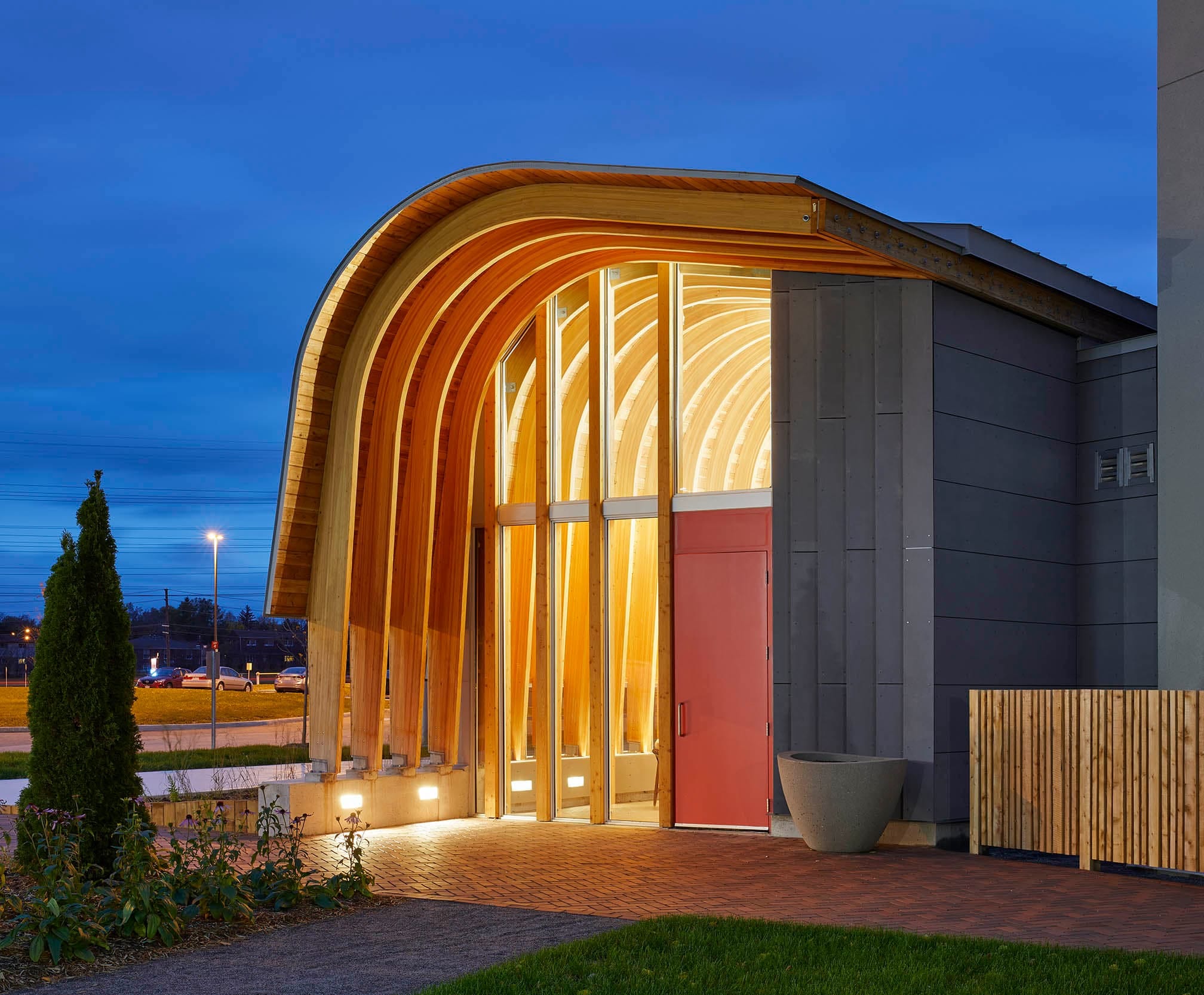
PH: Does that tie into this concept of the Seven Generations in any way? Is there linkage between that and the notion of time over—
MH: Absolutely, absolutely. I mean, we are in the now, right now, right? You often hear this term, Seven Generations. A generation is about twenty years, so seven generations is about one hundred and fifty years into the future. Our planning, you know, and our payback times when we look at when we’re financing or building buildings, or thinking about whether we should put a sustainable system in, are much, much, much, much shorter than that. You’re looking at a seven-year payback. Or it doesn’t get put into a project. Ten years, if you’re lucky, maybe fifteen if there’s a green loan in there somewhere.
I also say that we should be looking backward. How do we look seven generations back to place ourselves kind of within that time frame? Understanding what has happened in the past is really … it affects us. Our ancestors are with us. It impacts what we’re doing now just as much as we should be thinking about what’s going to be impactful to seven generations out. These children that we don’t even know. So how do you plan for that? It’s really kind of a mind-blowing thing, but I think it’s really about placing yourself in that time frame. Which is much broader than we typically think.
PH: What do you uncover, what do you have access to, when you think that way?
MH: I talk a lot about our Canadian culture and our lack of Canadian identity, specifically through architecture—and, one may argue, through landscape as well. As I said earlier, we’ve imported culture. It’s still relying on these other ideas that don’t really have an identity rooted in this place. To me, that’s one of the things we’re looking back—it’s not just about people, too. We’ve started to take a look, in our practice, which is what we do a lot, [into] the natural history of a place. We go back as far as we can—as far as we can gather knowledge about.
In this area, in Southern Ontario, it’s really about the retreat of the glaciers, right? So we’re going back fourteen thousand years here. There’s been evidence of Indigenous people being here about ten thousand years ago. But there’s also four thousand years of other things going on, whether it’s rivers eroding, whether it’s lakes moving, whether it’s shorelines changing—all these things are important to understanding where you’re building, why you’re building there, what impact you’re having on this right now, you know? If you go back fourteen thousand years, it does tend to make you think fourteen thousand years ahead as well.
So, thinking about time in a broad sense, [it] really grounds you. It grounds where you’re making decisions from, it grounds why you’re doing things, and it kind of points you in a direction of what’s important.
PH: Often I find it can be discouraging if you think of the change that has to happen in order for us to be more certain of our futures, and how far away we are from that and how many things are in our way—whether it’s bureaucracies or financial systems or individuals. What’s your sense of how we’re going to move toward that place in a way that … gets us there?
MH: Do you want my optimistic answer? [Both laugh] Because, I mean, as I said previously, the earth will take care of herself. She will be fine, our mother will be fine. That’s something that’s kind of scary to think about, but, being an optimist, there are … There’s always bureaucracy in the way. The thing I think is really exciting for us is that we’re starting to see people—not just designers, but the people that are funding projects, developers—see the value in Indigenous ways of knowing and being. And a respect for not just nature, per se, but the world around us. And that’s happened within my lifetime as a practicing architect, the past sixteen-plus years. Specifically, in the last five [years], we’re seeing a very big shift.
I have my theory about why this has happened, which is the confirmation of the children being found in Kamloops. I think that threw everyone for a spin. You had people coming out of the woodwork going, “Oh, I didn’t know.” And this is something that if you’re Indigenous you’ve always, you’ve always known that there were missing children. And they’re somewhere. Where they are, we didn’t know. We knew there were unmarked graves at every residential school. Which is, at the height, one hundred and thirty [sites] across Canada. We’re just scratching the surface here. So I think the reality of that treatment, um, is a driver for people starting to see the value in the longevity of Indigenous people, but also the value in our ways of doing things. That’s something to be celebrated, and I see … if we come together and start to, as I said previously, value this in the same way we value Western ways of thinking, we’re going to see the Canadian culture get better, and better, and better.
PH: One thing that I find always helps to land some of these ideas is specific examples of a moment that you were on a project, or maybe even before you were an architect, where something specific happened that you said, either, “Something has to change” or “This is change happening” or “I have some hope now.” And it could be something small. It could be … you described hearing the birds on Richmond, for example.
MH: Yeah.
PH: Are there other examples where you’ve found yourself, in the moment, having a visceral sense of these ideas you’re talking about coming to life?
MH: Well, I’ve wanted to be an architect since I was like four years old. [Laughs] So I can’t remember where that moment happened, but I remember being very much in that realm. I’m a designer, artist by heart. I can knit, I can paint, I can draw, I can crochet, I can weave, I can sculpt, I can do all of these things. So it’s kind of how I approach my architecture, from an aesthetic point of view—a very formal, very visual, very design-heavy point of view.
But also, I see a lot of people do that. A lot of firms are design-focused. What makes our work different at Two Row is that we’re very much focused on all these other things. It’s about [the] process for us. And a lot of firms may say, “It’s a process, it’s about listening”—and we do that, too. But I think the way we approach it is a little bit more sensitive, in the sense that our work is not about us. We are the translators of other people’s words and knowledge and the more of those words and knowledge and conversations that we can gather and have with people, the better off the project is.
We don’t come from a point of view where you’re going to see a Two Row project and go, “Oh, that’s a Two Row project.” Because it’s, again, of the place that we’re building, the history of that specific place, and it’s of the people that we’re working with at that specific time. We like working that way. It’s not about us. We’re just the facilitators of the work.
When you’re younger and you’re looking at Frank Gehry or Douglas Cardinal or Norman Foster, you think, “Oh, I wanna be like them!” You know, you’re looking at Zaha Hadid, Renzo Piano, all these people. It’s like, OK, they’re all star architects, but they all have a clear approach and methodology and aesthetic. It kinda comes down to that aesthetic, to some degree. The recognition of their building is through their signature style. And, for me, there’s a moment where I got to a point where I’m like, You know, it’s not about us. It’s not about producing a building that looks like a long house or a teepee. It’s really about the values that are embedded in that.
This probably happened five, six, seven years ago—halfway through my career, I’d say. We were starting to realize, “Oh, hey, we can do things differently and there’s a need to do things differently.” We don’t work on, you know, fancy buildings all the time. A lot of our work is about nonprofit housing or small buildings on reserves where the budgets are extremely tight. So you’re always trying to be creative about how you do something that’s unique and special to the people that you’re working for without blowing your budget. And a lot of the time they don’t want brass and glass, you know, they don’t want fancy. They want something that works for them. And they oftentimes have been making-do in second-hand houses, something a little older. In some post-secondary institutions, the native centers are in closets, literally in closets. So any space is better for them.
32:21 So for us it’s really about finding the value in where you’re working and who you’re working for and bringing that forward. That’s something that I think is quite different than [what] a lot of other firms do, which is more about aesthetics, I’d say, about recognition to some degree. We don’t care.
I’m so lucky because I get to sit with elders across Canada and ask them questions and just shut my mouth and listen. I don’t have to say anything. There’s something quite powerful in that moment where you’re just absorbing. You know, as architects, designers, we’re always taught to feed back—to make sure that people know that we know what they’re saying. And people get it if you just listen. It’s really quite a powerful tool.
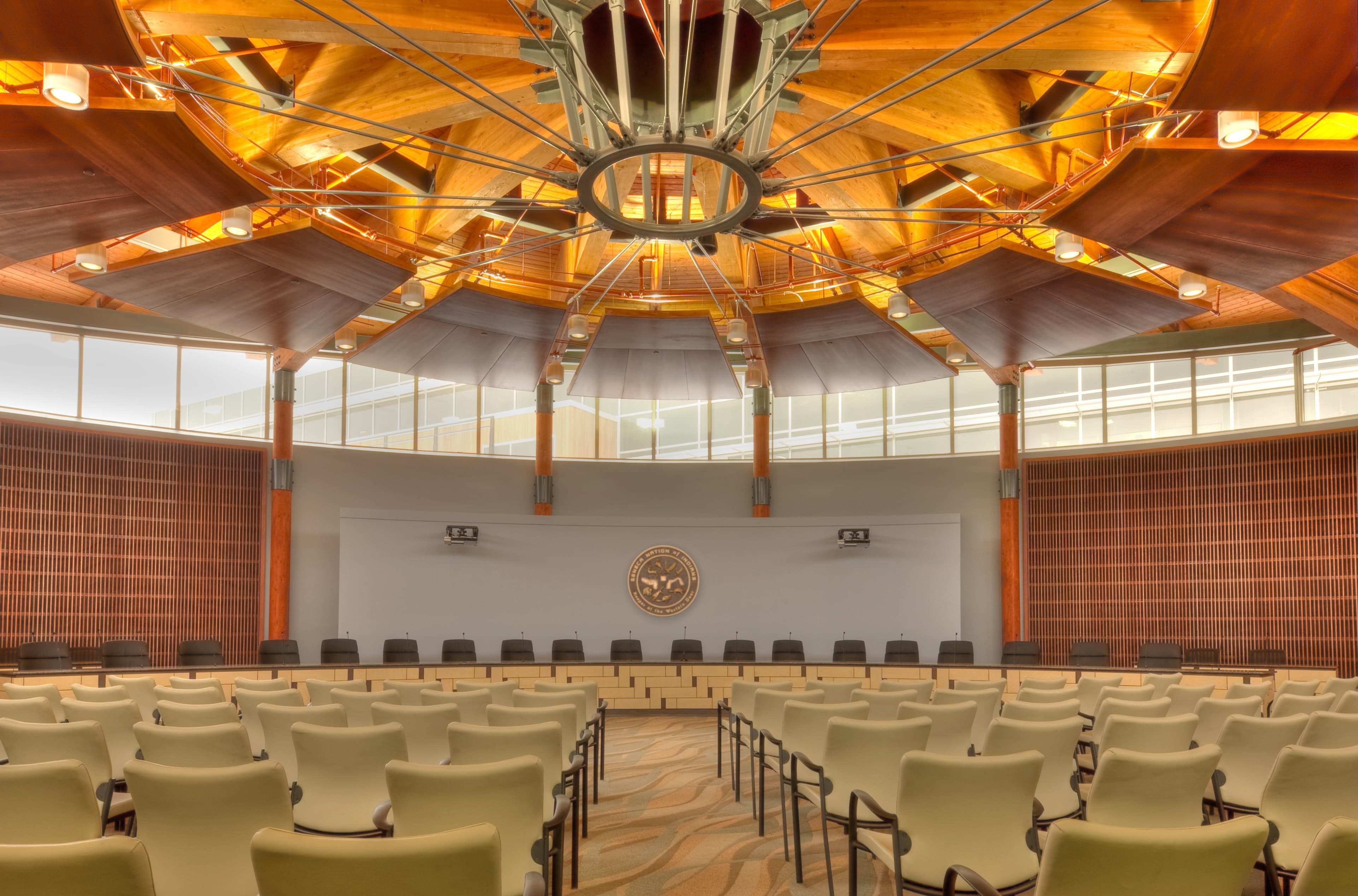
PH: In previous interviews you’ve mentioned two projects, one with the Seneca people in upstate New York, the other with Seneca College here in Toronto, as being among your favorites. Can you talk about why they remain important to you?
MH: So the Seneca Nation of Indians is the first one. And that’s in Salamanca, [in] New York State. So it’s not for Seneca College, it’s for the Seneca Nation of Indians. They have two reservations because they’re in the States. They also have a casino, two casinos, so they’ve come into a fair amount of money. They were amalgamating all of their different services in Salamanca into—which were housed in old buildings, old houses, old duplexes, whatever they were, bungalows—into one thirty-thousand-square-foot building. They had two other buildings there, a childcare building and a healthcare building, and this was to be the third piece in what we considered a campus for them. It was a really, really fun exercise. One of my first projects that actually got built, so this is maybe three or four years into my career, where like, “Is anything going to get built?”
Let me just say they had a previous architect working on it that they didn’t see eye-to-eye with and they brought us in. This is kind of where it started for me, understanding it’s not about Two Row, it’s not about Matt Hickey, it’s about the clients you’re working with. We did a bunch of gaming exercises with them, we brought in the chiefs, the elders, we played around with where people should be, we asked a ton of questions. That front-end work took a fair amount of time. And things happen that you wouldn’t typically have in an administration building.
It’s a three-story building, so you’d think that the president, the treasurer, and the councilors are at the top. Well, they’re not! It’s non-hierarchical. The people that are on the top are the people who don’t see [other] people all the time, finance, people that are kind of not necessarily front-facing. All the councilors’ offices are on the ground floor, right when you get in the building. Which is quite amazing. It’s what the community wanted, they wanted accessibility to them.
There’s also a courthouse in there and police as well. It’s a really nice kind of amalgamation of all these pieces. A bunch of Indigenous iconography—not even iconography but values and imagery [are] embedded in that building as well. So it’s one of my favorites because it’s one of my first where I actually got to see some … what Indigenous design could look like in my career.
Odeyto, which is one of the last projects that we did, this is up at Seneca College. We were brought into the process partway through them thinking about it—and for us it was really about establishing identity, Indigenous identity in a place for the students at that school. A lot of Indigenous students come from the north, or from far away, it’s their first time in the city, and, as you know, Toronto can eat you up and spit you out fairly easily. A lot of these people have never left their home communities before, so we really wanted to create a place of shelter for them but also a place that was celebrated within the college as well. And it is, which is exciting.
PH: One thing you said a little bit earlier was about iconography and I know you’ve also said that it’s not just about iconography. But at the same time, it does feel like there’s probably a strong relationship between expression and the principles …
MH: We layer it in there. But it’s not [like] we put a totem pole up and call it a day, right? There’s moments when we do reference things. In the Seneca Allegheny building, the front facade is a sloped three-story glass facade facing south and it has the Evergrowing Tree Wampum in it, in the fritting of the glass. It’s subtle. You could call that iconography, right? But it’s not something we do as a one-and-done type of thing. It’s typically embedded into multiple layers of the conversation.
It’s similar with Odeyta. Odeyta has twenty-eight ribs, representing the twenty-eight days in the lunar cycle. It’s also oriented—the orientation of that building is oriented toward the summer solstice, June 21st, June 22nd, where the sun rises on the horizon. We do a lot of sunrise ceremonies, so that kind of orientation or marking of what I would call the real direction is important. We always try, and especially in the city, try and mark directionality as a way of grounding people in the natural systems of the world.
PH: For anyone who’s young and listening to this, who’s thinking about this and is inspired, who maybe sees it as an almost impossible jump from where they are to where they need to go, what would you say to that person?
MH: I came to [architecture] through the arts world. I went to college and I ended up working my way into a university that way. My math is good, but I don’t think you need to be a brain surgeon in math by any means. So don’t let that hold you back is one thing I would say.
The other piece is [that] architecture can take you anywhere. You don’t necessarily even need to be building buildings, per se. You can be writing, you can be doing landscapes, which I love, you can be doing interiors—whatever you want to do, it’s kind of a nice degree to get to allow you to move in other ways.
PH: The various fields of design, or creative fields more generally, are interconnected. The skills you develop and the interests you have in one area can apply elsewhere.
MH: I’ve been talking a lot about hierarchy previously, and inclusivity. And one of the ideas we’ve been thinking a lot about recently is this idea of interconnectedness. And how, as we’ve said, our relations and the relationships we have with the people around us, are actually real and tangible things. So we’re starting to think about that from an outward presentation point of view, from an architectural point of view, of how, to some degree, we can’t be separated from the environment that we live in. And how does that affect our architecture? How does it affect our landscapes, our urban planning?
PH: Interconnectedness. It’s a word that characterizes our challenges, which are linked, and the solutions to them, which can only come when we work together. Recognizing and respecting the ties that bind us, to each other and to the planet, is necessary to make the kinds of progress that will help us all to flourish. Two Row’s way of working, and the projects their efforts help bring into being, is but one inspiring example of how this attitude accelerates positive change. This belief—that design can be not only a force for good, but a tool for encouraging people to continually make better choices, has united the interviews we’ve published in recent months with Alex Honnold, Bruce Mau, Barbara Groth, Bjarke Ingels, and Farida Abu-Bakare.
Today’s conversation has been the final episode of First Things First season three. We are taking a brief hiatus before the podcast returns, in a few months, with a new season and a new thematic focus, as part of Frontier Magazine. Stay subscribed to this feed and you’ll receive the new episodes when they’re released. If you’re listening but not subscribed, visit magazine.frontier.is to read our weekly newsletter and receive word when the new episodes are ready.

